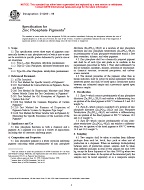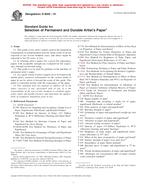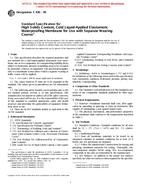1.1 This test method covers the determination of the consolidated drained shear strength of a soil material in direct shear. The test is performed by deforming a specimen at a controlled strain rate on or near a single shear plane determined by the configuration of the apparatus. Generally, three or more specimens are tested, each under a different normal load, to determine the effects upon shear resistance and displacement, and strength properties such as Mohr strength envelopes.
1.2 Shear stresses and displacements are nonuniformly distributed within the specimen. An appropriate height cannot be defined for calculation of shear strains. Therefore, stress-strain relationships or any associated quantity such as modulus, cannot be determined from this test.
1.3 The determination of strength envelopes and the development of criteria to interpret and evaluate test results are left to the engineer or office requesting the test.
1.4 The results of the test may be affected by the presence of soil or rock particles, or both, (see Section 7).
1.5 Test conditions including normal stress and moisture environment are selected which represent the field conditions being investigated. The rate of shearing should be slow enough to ensure drained conditions.
1.6 There may be instances when the gap between the plates should be increased to accommodate sand sizes greater than the specified gap. Presently there is insufficient information available for specifying gap dimension based on particle size distribution.
1.7 The values stated in inch-pound units are to be regarded as the standard. Within this test method the SI units are shown in brackets. The values stated in each system are not exact equivalents; therefore, each system must be used independently of each other.
1.8 All observed and calculated values shall conform to the guidelines for significant digits and rounding established in Practice D 6026.
1.8.1 The method used to specify how data are collected, calculated, or recorded in this standard is not directly related to the accuracy to which the data can be applied in design or other uses, or both. How one applies the results obtained using this standard is beyond its scope.
1.9 This standard does not purport to address all of the safety concerns, if any, associated with its use. It is the responsibility of the user of this standard to establish appropriate safety and health practices and determine the applicability of regulatory limitations prior to use.
Product Details
- Published:
- 11/01/2004
- Number of Pages:
- 7
- File Size:
- 1 file , 70 KB
- Redline File Size:
- 2 files , 160 KB


